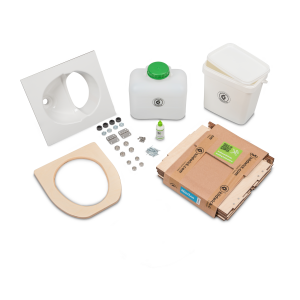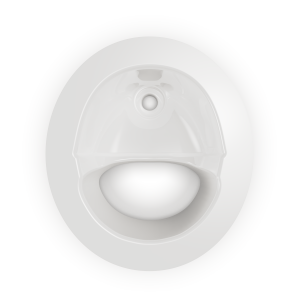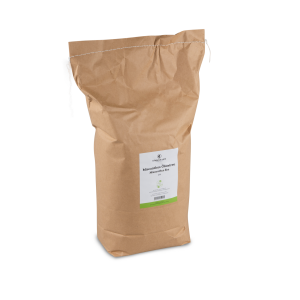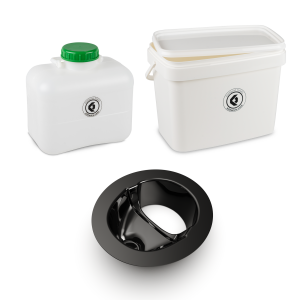FAQ
FAQ englisch
FAQ englisch
Top 10
The way a compost toilet works is quite simple: A special separator is used to collect urine and solids in separate containers. Urine is either collected in a urine container located at the front of the toilet or diverted to an external container outside the toilet via a siphon and hose. Solids, on the other hand, fall into a bucket at the back of the toilet. It is lined with a compostable bag that contains at least two handfuls of cover material. After going number 2, cover the solid waste with as much cover material as needed to remove moisture from the solids. This helps to keep unpleasant odors at bay. It is worth noting that this type of toilet system doesn’t require water to flush down human waste, making it an environmentally friendly solution. For more information, check out this blog article.
You don’t have to worry about unpleasant odors provided that you use the compost toilet correctly. It is really important to use enough cover material as it removes moisture and odors. As a rule of thumb, the litter should cover the solids completely. The cover material ensures that solids dry properly, thus eliminating odors. In poorly ventilated rooms or rooms with high humidity (e.g., bathrooms in RVs), we recommend that you use a fan. The additional airflow speeds up the drying process and prevents smells from getting trapped. If urine comes into contact with oxygen, ammonia is produced after some time, which has a very strong odor. This is the reason why you should empty the urine container every day or every other day. In addition, we recommend our Spillguard Kit as leakage and odor protection. Ideally, you will also have a spray bottle with some mild detergent (e.g., beeta ecological cleaner) or a mixture of water and vinegar (at a ratio of 1:1) at hand. Spray 2 to 3 times after peeing to “flush” the toilet. This ensures that no urine residue remains in the separator.
Here you can find an overview of all our toilet models. You can use the filter options in our online shop to search by size, capacity, etc.
Since the cover material is extremely effective, you don’t necessarily need a fan. However, it’s a good idea to use one in rooms with high humidity (e.g., due to showering or bathing) and/or in poorly ventilated rooms. Otherwise, the solids won’t dry properly, which will give rise to bad smells. In fact, around 60–70% of our customers use their compost toilet successfully without a fan. If you are still undecided about whether to use a fan or not, don’t worry. You can always install it at a later time. The respective sawing templates are available free of charge in our support area. You can purchase the 5 V and 12 V fan set separately in our online shop under “Equipment”.
Most importantly:
- Suitable cover material (e.g., miscanthus)
- Compostable bags
- The Spillguard Kit as leakage and odor protection
- A spray bottle containing either a mild detergent (e.g., beeta ecological cleaner) or a mixture of water and vinegar (at a ratio of 1:1) to “flush” the toilet after peeing. Spraying 2 to 3 times is sufficient.
Use the Spillguard Kit as leakage and odor protection if the urine container is inside your toilet. This is the case with all our toilets, except the FancyLoo Divert. A siphon, on the other hand, is the right choice if you divert the urine to an external container (e.g., a urine container outside the toilet). You can’t combine the two products because the siphon and the container don’t fit inside the toilet at the same time.
My Order
Shipping within Germany costs €4.90, within Europe €14.90 and to all other countries between €24.90 and 70.00 €.
Usually, you will receive your order within
- 2 days for deliveries within Germany
- 4 days for deliveries to Austria
- 6 days for deliveries to Switzerland
- 1–2 weeks for deliveries within Europe
- 2–4 weeks for deliveries to all other countries
Packages shipped to destinations within Germany and Europe are delivered by DHL. Shipments to all other countries are handled by the service provider PARCEL.ONE, which cooperates with the responsible shipping providers in the respective destination countries.
Once we have processed your order, we will send you an email with a tracking number. If you don’t see the email in your inbox, please also check your spam folder.
If you encounter any problems when placing your order, please try to use another browser or device (e.g., laptop instead of mobile phone). Sometimes, there may be technical issues on our end. In such a case, rest assured that we are already working on the problem. Please try again a little later.
If none of this helps, please send an email to shop@kildwick.com specifying the following information:
- Billing and delivery address
- Requested item(s)
- Payment method
You can choose from the following payment methods:
- Credit card
- PayPal
- Advance payment
- Bank transfer
- Pay now.
- Klarna
- Amazon Pay
- Apple Pay
- Bankcontact
- Belfius
- eps
- iDeal
- KBC
- Przelewy24
Payment via PayPal:
Please don’t click “Back” during the checkout process as this may cancel the payment. If the payment was canceled, you will usually receive an automated email notification after roughly 10 minutes, enabling you to continue the process.
Credit card payments:
If the payment was canceled, you will usually receive an automated email notification after roughly 10 minutes, enabling you to continue the process.
Note: 3D Secure is a new security standard for online credit card payments. Thanks to two-factor authentication (2FA), it offers an additional layer of security. Please make sure that 2FA is set up for your device.
Please check if you have set up two-factor authentication for your device. In addition, some credit cards aren’t authorized for online transactions. Please contact the provider directly for further information.
You will usually receive the invoice around 15 minutes after the shipping confirmation. If you don’t see it in your inbox by then, please also check your spam folder.
We are very sorry to hear that your order was damaged in transit. Unfortunately, this can happen sometimes. Please send a photo of the damaged goods to shop@kildwick.com. We’ll have a look at it and either exchange the item or send you a replacement.
We are very sorry to hear that your order is incomplete. Please send an email to shop@kildwick.com specifying the missing item(s). We will send it/them to you as soon as possible.
Unfortunately, there is no one-size-fits-all answer as it depends on the destination country and the value of the goods. Please check with your local customs office.
Yes, you will be refunded the VAT if you send the stamped original invoice to:
Perato GmbH
Haferkornstraße 15
04129 Leipzig
Germany
If you have any further questions, please reach out to us: shop@kildwick.com
Yes, you can change your order to an intra-Community supply. To do so, send an email to shop@kildwick.com. We will then adjust the order or place it together with you.
Use & Disposal
Before you start using the compost toilet, line the solids container with two bags. Why two, you ask? Just to be on the safe side if one bag tears. Then place at least two handfuls of cover material in the lined container to speed up the drying process from below. Put both the urine and the solids container inside the toilet and you are good to go!
There is no one-size-fits-all answer as it depends on the model and its capacity (see table). When urine is exposed to oxygen, ammonia is formed after a while, which has a strong odor. This is why we recommend that you empty the urine container at least every other day. Empty the solids container at a fill level of about three quarters.
|
Model |
Urine container |
Solids container |
|
Fancy Loo |
9.5 l (2.5 gal.) |
16 l (4.2 gal.) |
|
EasyLoo |
9.5 l (2.5 gal.) |
16 l (4.2 gal.) |
|
MiniLoo |
9.5 l (2.5 gal.) |
9.5 l (2.5 gal.) |
|
MicroLoo |
5 l (1.3 gal.) |
5.5 l (1.5 gal.) |
|
PiccoLoo |
5 l (1.3 gal.) |
5.5 l (1.5 gal.) |
• Emptying the solids container:
Remove the bag from the solids container and seal it tightly. Dispose of it in the garbage can for residual waste. Throwing it into the garbage can for organic waste is forbidden. An alternative is composting. Here you can find more information on this topic.
• Emptying the urine container:
To stir up any urinary solids that have settled at the bottom of the urine container, shake the container vigorously for a moment. This makes it easier to get them out when you empty it. Either pour the urine down a drain (e.g., in a public toilet) or dilute it with water and use it as a fertilizer. Note, however, that each plant reacts differently to urine as fertilizer. Here you can find more information on this topic.
Urine can simply be poured down a drain (e.g., in a public toilet). It’s not allowed to empty it into a storm drain as the urine would flow directly into local waters without prior treatment. Diluted with water, it makes a great fertilizer for many plants. Here you can find more information on this topic.
Its properties make miscanthus an excellent cover material.
Miscanthus is:
• Highly absorbent and binds odors thanks to its open pores
• Virtually dust-free and therefore ideal for allergy sufferers
• Fast-growing and climate-friendly
• Produced locally, binds CO2 and protects the soil because it’s never completely harvested
Click here to find out more about miscanthus and cover material in general.
• Solids
• Cover material
• Toilet paper
When disposing of the solids as residual waste, you can also put feminine hygiene products or moist toilet tissues into the solids container.
What if the residue is particularly stubborn? Heat water to about 70°C (158°F), pour it into the urine container, add some vinegar or citric acid and let it sit for a while. The vinegar or citric acid removes the residue and the hot water kills viruses and bacteria.
Tip: If you add a tablespoon of vinegar into the container after emptying it, hardly any residue will accumulate and the vinegar will neutralize the urine smell.
Smell
Tip 1: Use a mild detergent to ensure that no urine residue, which is a potential source of odor, remains in the separator. We recommend, for example, a mixture of water and vinegar at a ratio of 1:1. Spray 2 to 3 times to “flush” the toilet after peeing.
Tip 2: Pour a tablespoon of vinegar into the empty urine container to delay the formation of bad odors.
Tip 3: Empty the urine container every day or every other day. This way, you avoid the smell of ammonia, which is produced when urine is exposed to oxygen.
Tip 4: We also recommend that you use the Spillguard Kit so that less oxygen enters the urine container.
Side note: If you drink enough water or other fluids, fresh urine usually doesn’t have a bad smell
If your urine container smells bad, we recommend that you pour hot water and some vinegar into the container. Let it sit for a while. The water temperature should be at least 70 °C (160 °F) so that viruses and bacteria don’t stand a chance. Then take a sponge and thoroughly clean the inside of the container. This should neutralize the smell.
Spillguard Kit:
If the Spillguard Kit has a bad smell, you can boil it in water mixed with some vinegar for about 10 minutes. After that, it should be free of any odors
Products
The Spillguard Kit consists of two parts:
• Screw-on lid for the urine container with a silicone ring
• Silicone plug inserted from above
When used in combination, neither liquids nor odors can escape from the compost toilet. The Spillguard Kit acts as an airtight, moisture-proof seal and prevents oxygen from entering the urine container. This significantly delays the formation of smelly ammonia, which is released when urine is exposed to air. Furthermore, it prevents urine spillage while on the go.
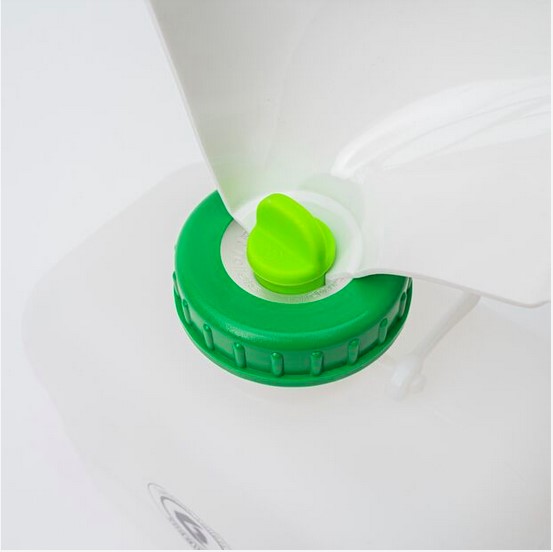
Technical questions
Option 1: You can use a commercially available HT pipe with a diameter of 5 cm (2 in). It’s available in any hardware store at low cost. Just connect it to the stainless steel flange.
Option 2: You can use a flexible aluminum pipe with a diameter of 5 cm (2 in), which you can also buy at any hardware store. It should be secured with a hose clamp.
For upward exhaust ducts, there are no length restrictions and the following applies: The longer the duct, the stronger the stack effect.
